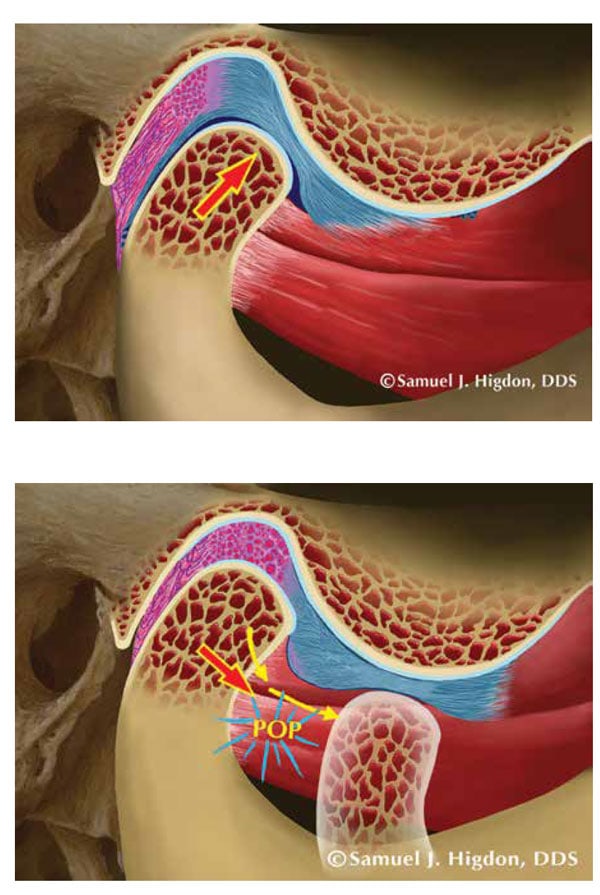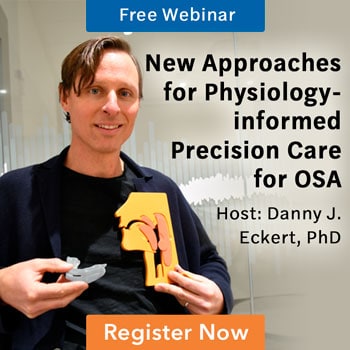Introducing a new series
 If it hasn’t happened to you, the odds are that it will! What am I referring to? The development of TMD symptoms associated with the delivery of a Mandibular Advancement Device (MAD) for the treatment of snoring or sleep-disordered breathing. Through a series of articles in 2017, DSP readers will learn how to predict, identify, and manage these unwanted side effects.
If it hasn’t happened to you, the odds are that it will! What am I referring to? The development of TMD symptoms associated with the delivery of a Mandibular Advancement Device (MAD) for the treatment of snoring or sleep-disordered breathing. Through a series of articles in 2017, DSP readers will learn how to predict, identify, and manage these unwanted side effects.
What are those odds? At this point we don’t have sufficient data to make predictions. However, as more dentists are undertaking treatment of OSA, it is being reported with increasing frequency. If you haven’t heard about it, it’s only because of the difficulty of getting the information to dentists who should know about it. Our series is an attempt to reach the dentists who are providing services in this evolving area of health care.
Who are the patients who might represent a risk of TMD? We do have data that provides important clinical clues related to this risk. This is the information that you need and we will be discussing these in future articles. However, if you are not doing routine screening for TMDs in your practice, the odds are that you will not recognize risk factors your patients may have.
Can the development of this problem be predictably avoided? There are specific precautions that will minimize the risk, always the first step. However, it isn’t enough to have a well-worded informed consent. If, in spite of you having taken reasonable precautions, your patient does develop TMD symptoms, they will want to know what happened and what can be done to correct this problem. More than that, the patient will want and need reassurance, and will quite properly look to you for answers and support. And, if you choose not to treat TMDs in your practice, you need to have a resource to whom you can refer.
 How much do you need to know about TMDs to inform and reassure your patient? Like most dentists, you probably didn’t get much information in dental school about TMDs. The following is a list of several essentials that need to be part of your dental sleep practice protocols:
How much do you need to know about TMDs to inform and reassure your patient? Like most dentists, you probably didn’t get much information in dental school about TMDs. The following is a list of several essentials that need to be part of your dental sleep practice protocols:
- You MUST screen your patients for occult evidence of potential TMD problems. We will be discussing this extensively in future articles.
- You must discuss the potential for the development of a TMD problem with every patient for whom you are providing MAD treatment, regardless of the findings from a screening history and exam. It is possible for TMD symptoms to develop, even when a TMD screening history and exam is entirely negative. We will be discussing this in a future article.
- In patients who may not be aware of any TMD symptoms but who have positive findings on a TMD screening history or exam, not only should you discuss the potential for the development of TMD symptoms in response to MAD treatment, you must decide if this is a patient who you feel comfortable treating and/or you should consider a treatment approach that does not involve mandibular advancement. There are other options. This decision must be made in conjunction with the patient’s sleep physician.
- You do, of course, need to have a well-worded Informed Consent. If you have taken all necessary precautions to identify and avoid the development of TMDs, and have explained the potential for such development, in spite of negative findings on screening, with a well-worded Informed Consent you will be at minimal risk of any legal issues developing.
- You need to feel confident in your knowledge of TMDs (even if you choose not to treat them) to be able to explain to any patient who may develop TMD symptoms what has occurred and the options for addressing these developments. This may be the biggest challenge. We will provide an overview of this body of knowledge in future articles. However, taking one or more CE courses just to expand that level of understanding is highly recommended.
The purpose of the series of articles that will follow in Dental Sleep Practice in 2017 will be to provide the information you need regarding TMDs related to MAD treatment. I look forward to helping you on that journey!





